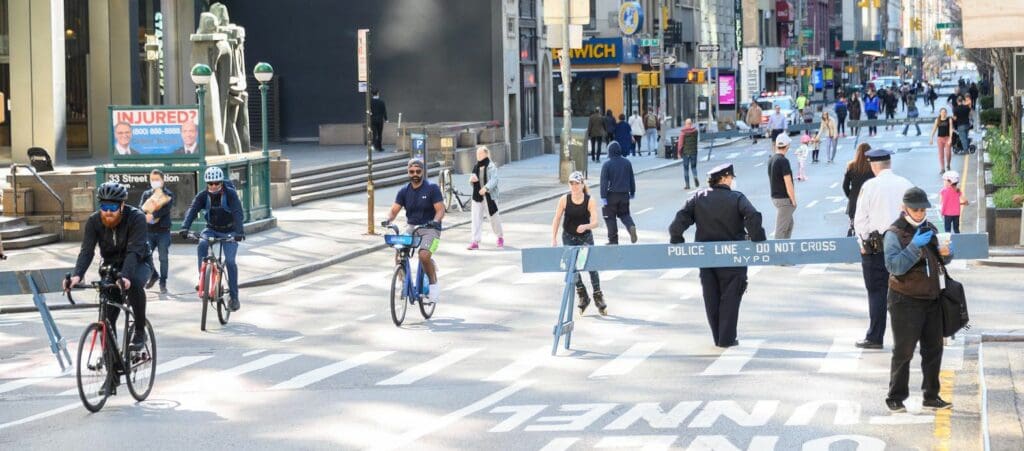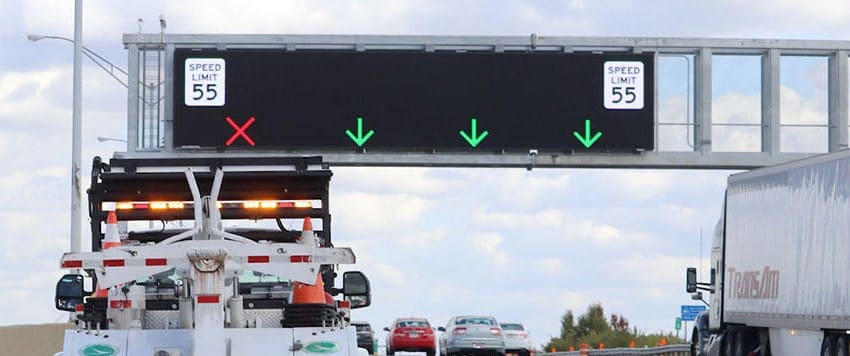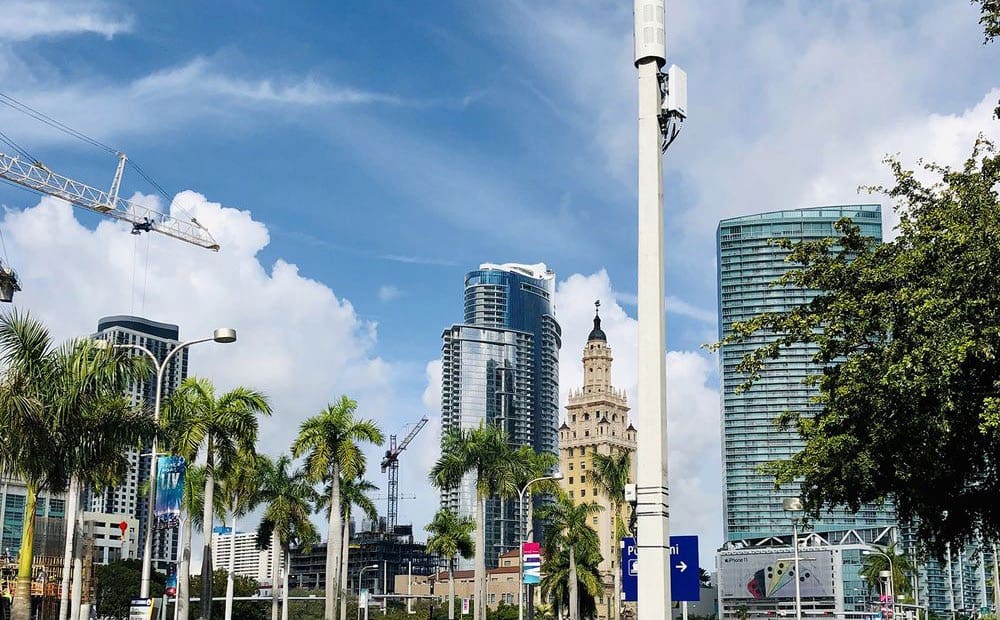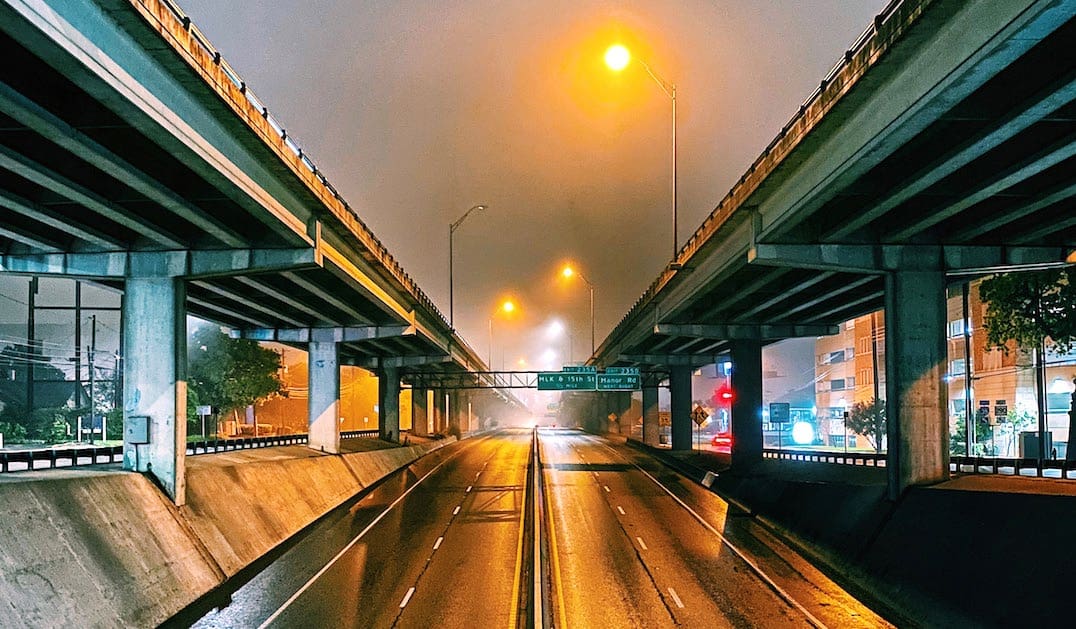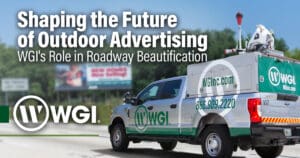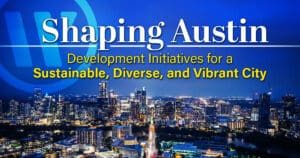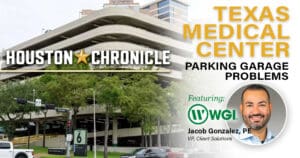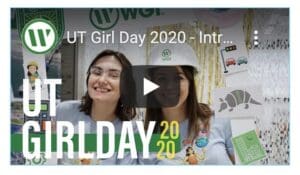Download this publication as a PDF
In early 2020, record employment, stock market valuation, and real estate prices were accompanied by record numbers of trips, consumer spending, and the development of new transportation facilities. Many states and regions were programming transportation improvements, and many were even benefitting from private investments, whether for brand-spanking-new intercity rail services or express toll lanes. High-speed wireless communications were on the cusp of a new generation, with the promise of “5G” permeating everything from urban and rural high-speed wireless communications to decisions on the future of connected vehicle communications for automobile safety and traffic operations.
Vehicle automation research continued to evolve, with a short-term focus on enabling driverless point-to-point ride services, first-mile/last-mile automated shuttle services, and freight mobility, whether using truck platoons on highways, or locally using unmanned aerial vehicles (UAVs), or friendly sidewalk robots. And speaking of first-mile/last-mile, the eScooter generation was fast
supplanting the shared bicycle generation as commuters and residents whizzed up and down urban streets, often abandoning the shared scooters haphazardly on the sidewalk when done.
Data was gathered from almost everything — mobile phones, cars, buses, trains, shared transportation devices, and light poles. This information could be configured to assess every travel trend you could imagine.
… And Then the World Stopped
The world tends to change fundamentally whenever there is significant geopolitical unrest. Other tragedies and disasters, whether related to human rights, disease, cataclysmic weather, earthquakes, or famines, may alter the culture, security, and confidence of countries or entire continents. But rarely has one event, a novel coronavirus, or COVID-19, affected so many in the world over a period of just five months.
Under other circumstances where there is a fundamental change, the goal is to return to “normal” — to gather for concerts, festivals, and sporting events, or to meet friends in restaurants, bars, or at home. Many people have jobs where they work side-by-side (some in hazardous surroundings), meet regularly face-to-face, or travel to meet clients and colleagues. I used to have a job where I
flew 150,000-200,000 miles a year across the US and abroad. Even this year, I traveled during six of the first 12 weeks of the year, meeting with colleagues and clients and attending conferences.
The coronavirus has changed all that — or has it? What can we learn? Are there changes that were already happening that merely accelerated? If just leaving home to do errands, meet people, or otherwise partake in society becomes a life-risking proposition, how can that society function? If to remain safe we must socially distance ourselves for the foreseeable future (vaccine developments notwithstanding), how do we need to permanently redesign our urban spaces and our businesses? How does our transportation system change and — of great interest to those of us in the Intelligent Transportation Systems (ITS) community — how do we use technology to make it work better for more people in this new environment? And given this will likely not be the last
pandemic we ever experience, what lessons can we learn for next time?
What Have We Learned?
Even as treatments and vaccines become available to control the pandemic, and many governments, businesses, and the public attempt to accelerate a return to normal economic and social
activity, there are some apparent transportation takeaways. For one, business and travel shutdowns allowed many to experience the potential health impacts of permanent reductions in automotive and truck trips. Urban commuters are experiencing views of oceans, mountains, hills, or even just an unfamiliar shade of blue sky. To what extent this influences travelers to drive less or buy electric vehicles is yet to be seen. The following offer thoughts on what we learned to date:
- Working from home (aka “telecommuting”) and virtual meetings proved effective in maintaining collaboration, productivity, and involvement, and some of our clients even report increased
engagement. While teleconferencing does not fully replace one-on-one relationship-building, it enables ongoing communication and coordination. - Telecommuting and significant job losses kept people off the roads, buses, and trains, and out of the skies. Traffic volumes are off as much as 70%, though reckless driving (including speeds
over 120 mph) and increased crash rates are now a concern. Some transit services are suspended while others are providing sharply reduced services. Parking facilities’ occupancy rates fell
80-95%. Air and rail traffic are off as much as 95% compared to last year. - Due to these reduced vehicle and passenger volumes, transportation agencies — regardless of funding sources — will experience a drop in revenues and potential reductions in budgets. Many are indicating between 15% and 25% reductions next year. While high-priority projects may still go forward, other work activities may be delayed, even as reduced travel volumes currently offer opportunities to accelerate current projects, happening in some but not all states.
- The private sector (airlines, rental cars, hospitality industry) is faced with financial shortfalls and the need to address physical improvements that minimize potential virus transmission using
social-distancing and face-mask requirements. Nevertheless, businesses may be dealing with reductions in travel at least over the short term. - Public transit is perceived by some as a “pandemic petri dish.” Reliable service, cleanliness, and maintenance must be emphasized to regain public confidence. Transit agencies will need to modify their vehicles to enable social distancing for the near future, and to undergo extensive and frequent cleaning and sterilization activities.
- If employers choose to quickly scale back telecommuting as business operations return to a more normal state, the increasing fear of public transit may drive travelers to the relative safety of their private cars, which could result in major congestion issues within urban areas. At the same time, many have embraced (or rediscovered) walking and bicycling.
- Parking facilities are proving to be adaptable to a variety of different uses. Such activities (concerts, drivein movies, outdoor dining, outdoor exercise, etc.) could catalyze process change for some retail and hospitality services. Adapting parking design to more flexible and resilient uses provide parking-facility owners with potential future sources of revenue.
- Balance must be struck between community concerns (screening for COVID-19 symptoms at transportation facilities plus contact tracing) and personal privacy. Technologies like UVbased
thermal detection glasses can be used by police or public inspectors to detect body temperatures. While these are being implemented in cities such as Dubai, UAE on their Metro system, their use elsewhere might pose privacy issues.
To address the reduction in transportation budgets and changes in travel patterns, smaller transportation projects offering more immediate safety and mobility benefits should be considered.
Specifically, these include transportation system management and operations (TSMO) strategies to better use current capacity and promote safety.
Future View of ITS for Mobility and Transportation Operations
With the above thoughts in mind, the following addresses how Intelligent Transportation Systems (ITS) might support future mobility and TSMO activities going forward:
Payment systems make a final move to fully cashless and contactless services. During the pandemic, many toll systems finally moved away from remaining cash toll booths to full all-electronic tolling, using both the familiar RF transponder technologies and license-plate readers for those without eligible transponders. Transit and parking payment are also increasingly moving to mobile or contactless payment options and away from cash.
Local traffic management requires flexibility for both social-distancing and accessibility needs. Repurposing of lane use for pedestrian, bicycles, transit, and limited access to other vehicles may require traffic management systems to modify signal operations, implement lane controls, and provide dynamic message sign displays
and updates to traveler info apps based on time-of-day, day-of-week, or special events. Lanes could be set for slow auto traffic, deliveries, pedestrians, and micromobility. Emergency priority and first-responder access must be addressed as well.
Data aggregation and analytics enable better operations planning and decision support. The collection of data from autos, trucks, transit vehicles, pedestrians, and bicyclists can be used to detail different uses of transportation infrastructure. It will help public agencies determine both physical and operational improvements needed to assure safety and mobility at the local and arterial corridor level.
Implementing touch-free (e.g., no buttons) and automated technologies for pedestrian and bicycle detection. At signals and crossings, this will reduce the potential for virus transmission. An additional benefit derives from implementing connected and automated vehicle (CAV) technologies that recognize pedestrians and bicycles to reduce the possibility of collisions.
Real-time and flexible parking management. Repurposing of parking garages has been of interest to many public agencies, as many are largely empty during off-peak periods, and now the pandemic has emptied many of these garages on weekdays as well. Garage facilities could be used to stage eCommerce deliveries, provide electric charging, and stage automated ride dispatch services. Additionally, recreational and retail uses like those introduced in the wake of the pandemic could be enabled by managing facilities to support both parking and other uses.
Curbside management systems provide flexibility to manage curb space. Based on time of day and demand, ITS and TSMO strategies could support delivery zones, ride-hailing pickup and drop-off (PUDO), bicycle/scooter parking, and/or parallel auto parking. One potential approach is the use of electronic reservation systems for curb space for deliveries, pick-ups and drop-offs, and parking for particular businesses.
Priority transit services/bus rapid transit. To help revitalize transit as a viable commuting option, ITS and TSMO strategies could focus on improving bus operations efficiency, whether through bus rapid transit or more transit-friendly operations. This may include providing enhanced station stops for bus operations, and transit signal priority, reducing travel times.
Automated local delivery schemes (drones or sidewalk robots) provide touch-free service. The not-so-distant future may see delivery transfer locations at repurposed parking facilities (e.g., small-scale intermodal transfer between truck and drone/robot).
Real-time and multimodal freeway, expressway, and toll TSMO strategies were used in lieu of physical capacity enhancements to maintain regional mobility. Active traffic management technologies would enable programmable lane use for express buses, HOVs, electric vehicles, and those equipped with adaptive cruise control and other technologies that enable greater traffic efficiency. Hard shoulder running concepts may evolve from outside shoulders to inside (e.g., left) enabling additional capacity without creating on/off ramp conflicts. The I-90 tollway northwest of Chicago and I-670 SmartLanes northeast of Columbus provide a successful direction going forward.
Public transit services innovate to provide cost-effective but safe services. Demand-responsive services with smaller transit vehicles may be sensible for lower-density areas in lieu of dedicated routes, as in Arlington, TX, allowing the servicing of fewer passengers at lower cost. Use of automated services and capabilities could further reduce cost and mitigate potential operator exposure to the virus.
Vehicle connectivity and automation technologies used to support operations solutions. Short-term vehicle automation may be the most effective for local circulator and demand-responsive services; also, for local-delivery robots and drones. Connected Safety Applications could be most quickly applied with a focus on public-sector fleets like first-responder vehicles and transit, enabling signal priority, rail-crossings warnings, communication with traffic signals to warn of pedestrian presence, and in-vehicle collision warnings. Future, higher levels of automation can achieve greater reliability when augmented with connected vehicle communications to support safety and mobility messaging. In light of this, the transportation sector should (a) continue to encourage FCC to not take away 45 MHz of dedicated transportation safety bandwidth in the 5.9 GHz range, and (b) strongly advise FCC to address industry concerns with the award of 1200 MHz of bandwidth to a single 5G service provider that, due to its proximity to the GPS communications band, has the potential to negatively impact the reliability of location-tracking and location-based services.
ITS and What WGI Can Do to Help
Nearly 20 years after the 9/11 attacks, the US and the world are again looking at an uncertain future. The most visible outcome from 9/11 involved more physical security at government facilities
and airports, as well as unprecedented government surveillance capabilities that could identify potential terrorism activities. From an ITS perspective, there were also great safety and mobility
benefits that accrued from a nationwide deployment of statewide and regional operations centers; real-time data collection from both public infrastructure and private-sector collected location-based data; plus traffic and incident management strategies. Expanded traveler information capabilities have, with the advent of 4G LTE-enabled smartphones, put real-time multi-modal data (and in some cases, video) in the hands of travelers, thanks to both public “511” systems and private sector apps such as Google, Waze, Transit, Inrix, and Apple Maps.
COVID-19 introduced significant and pervasive concerns about physical access between individuals, and complex issues related to the very form and function of transportation services and public spaces. In the short term, there will also be changes in how, when, and where we travel.
Finally, the emergence of 5G wireless communications may offer opportunities to better support high-speed data access for urban, suburban, and rural users, as well as supporting COVID-19 contact tracing and personal-health monitoring, in addition to vehicle connectivity for safety and mobility.
WGI offers the following services that support the expanded use of ITS
technologies in the future:
- Systems engineering and design capabilities for freeway and arterial-based TSMO solutions including signalization, cameras, sensors, dynamic-message signing, and communication networks.
- Design of all-electronic tolling (AET), replacing hybrids of electronic and cash toll booths.
- Design-Build of toll express lane facilities using AET and TSMO technologies.
- Design of advanced parking information, management, and payment systems, along with automated parking concepts. FlexPark solutions developed by WGI enable the use of parking garages for other applications besides parking, including eCommerce and retail activities.
- Through our data science partner UrbanSDK, data aggregation and analytics capabilities to assist public-agency planning and decision support.
- Using our geospatial and utility coordination resources (including unparalleled LiDAR and GIS tools), we support public agencies assessing the constructability of fiber-optic infrastructure and ITS infrastructure, as well as assisting firms or agencies in obtaining permitting for implementation of both 4G LTE and 5G wireless infrastructure.
- WGI is supporting Smart Cities initiatives that include public information kiosk systems, through providing location design and identifying power and communications connectivity.
- Through our initiatives involving Complete Streets and mobility planning, WGI was involved in the development of local curbside-management strategies along with repurposing of streets for pedestrian, bicycle, and transit use; implementation of first-mile/last-mile services such as automated shuttle and circulator services; planning for micro-mobility oriented facilities, flexible parking solutions, and both transit- and pedestrian-oriented developments.
The aftermath of COVID-19 will undoubtedly lead to changes in transportation services and choices, as well as how travelers and residents look at their environment. WGI’s diverse suite of services is well-suited to helping public agencies adapt to these changes and devising new operational and technological solutions that prepare the agency for both near-term and long-term challenges.


